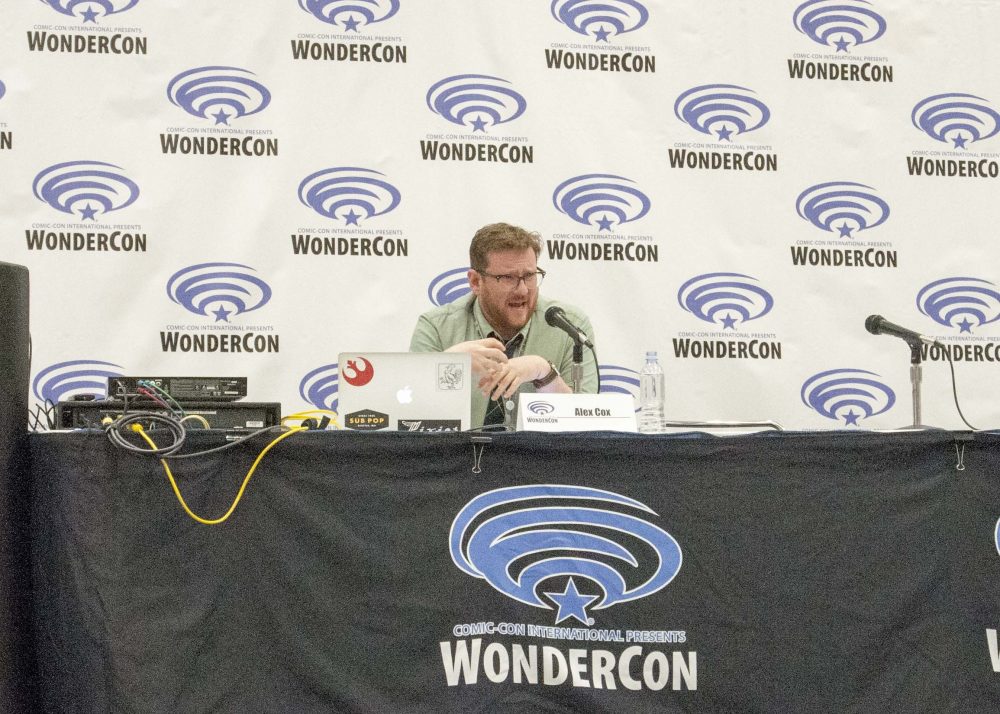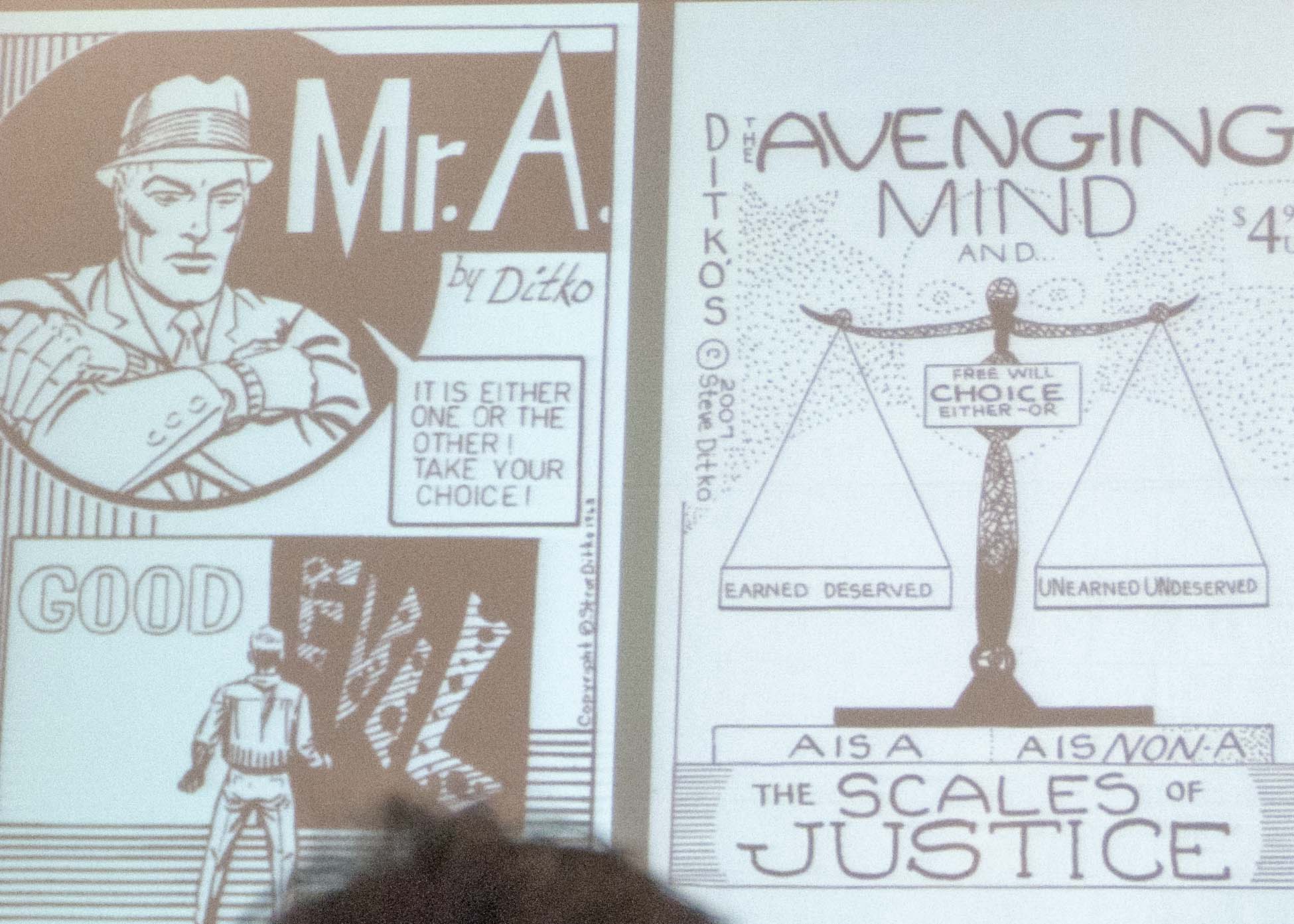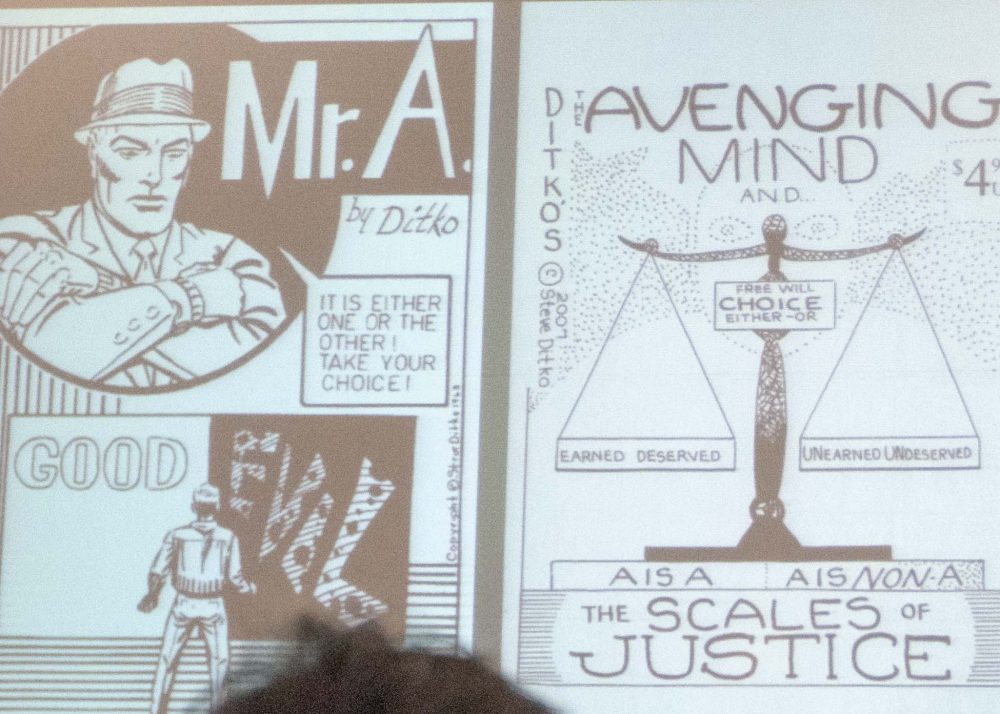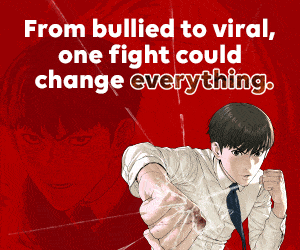
If you are familiar, or in the least semi-familiar, with the early history of the comic medium, images of fit men flying and punching everything in sight while wearing tights might blip through your imagination. Perhaps to your surprise, comics in the early 1900’s were diverse and meant for a broad audience. In fact, it was not unheard of for those comics to be used as political, social, and economic soapboxes for their creators. As discussed in room 208 of this year’s WonderCon by CBLDF’s Alex Cox, the history of comics and activism have come a long ways together.
“All the examples I have for you today were controversial in their own way,” said Alex while he prepped the PowerPoint he was going to present. He then looked over the crowd and gave an apology. “I’m working with a hundred years-worth of material here, and I didn’t know just how over my head I was until I started putting this lecture together.” He added that if anything, this was to be the lecture’s first “test run,” where certain omissions were to be expected. Eventually, when the odd bits and crooked corners were straightened out, he said it would be posted on their website. “I also left out [our] work from this. It seemed like the humble thing to do.”
The presentation began with a look at 1912, with comic legend Winsor McKay, best known for his eternal Little Nemo. “Windor McKay was deeply political and a pacifist,” said Alex as he showed strips entitled The Victor and Three More Days of the Suffrage Hike to Washington. 1913 had the likes of Nell Brinkley. “She was a very modern woman of the time,” said Alex. “She began to cartoon at the age of sixteen, and eventually caught the eye of William Hurst, who supported the arts.”
The 1920’s brought about socialist ideas surrounding President Franklin D. Roosevelt’s “New Deal,” a response to The Depression. Harold Grays used his comic Little Orphan Annie to express his dislike for President Roosevelt’s program. “[Grays] worked at the Chicago Tribune and got a lot of support from his boss, who also disliked Roosevelt’s New Deal.” On the other side of that, comic icons Jerry Siegel and Joe Shuster loved the program. “Superman was partially due to the New Deal; An alien to planet Earth who works his way up in life… Early on he fought dishonest stock brokers, slum lords, corrupt politicians… He was a post-depression hero.”
War marked a great deal of the 1940’s. With it, comic publishers used their properties as pro-war propaganda. Jack Kirby, another comic legend, co-created Captain America during this time. Iconic is the image of Captain America punching Adolf Hitler in the face. “G.I.s were buying these types of comics by the truckload,” said Alex. The Little Orphan Annie comic had also became pro-war, asking for the sale of war bonds and urging aluminum drives.
After WWII, the 1950’s saw a rising again in the approach to social issues. “EC Comics, started by William Gaines’ father, use to be educational, geared toward religious studies… After his father died, Gaines turned it towards entertainment.” EC Comics is important because it introduced “New Direction Magazine,” which didn’t shy away from hard-hitting social issues. One comic that Gaines tried to push was one called Judgement Day, which featured an African-American astronaut. “The Comics Code kept rejecting the comic for various reasons… finally saying they would not publish it do to the black-main character.” In response to this, Gaines just about shut down every one of his company’s projects out of spite, except for a little magazine you might know called Mad Magazine.
The 1960’s became a time for the rise of women’s issues in comics, especially with the likes of Wimmen’s Comix.” “It was the first comic to feature an out lesbian,” said Alex. Afterward, the 70’s became marked with more cutting-edge satirical comics, with the likes of National Lampoon, a far different entity to how we know it today. It wasn’t long after this that Mad Magazine followed suite and increased their level of satire. Another important work of the 70’s was 1973’s Abortion Eve. “On the heels of Roe VS. Wade, this educational comic was released as a way to discuss women’s issues. Of course, it was also very controversial.”
Throughout the next couple decades, we got the likes of Blume County, Bill the Cat, Dykes to Watch Out For, The Boondocks, Love is Love, and many more comics regarding activist stances. However, with time running out on the panel, Alex Cox had hardly any time to thoroughly discuss them.
If we are to take at least one thing from this lecture, is that the comic medium is a great place for artists and writers to express the ideas and concerns that they feel are important for today’s world. Though it has a booming entertainment side, comics are also a refuge for activists and hopeful people who want only to bring about positive change in our society.















I spotted a small but kinda important typo: Winsor McCay’s name is spelled incorrectly.
Comments are closed.